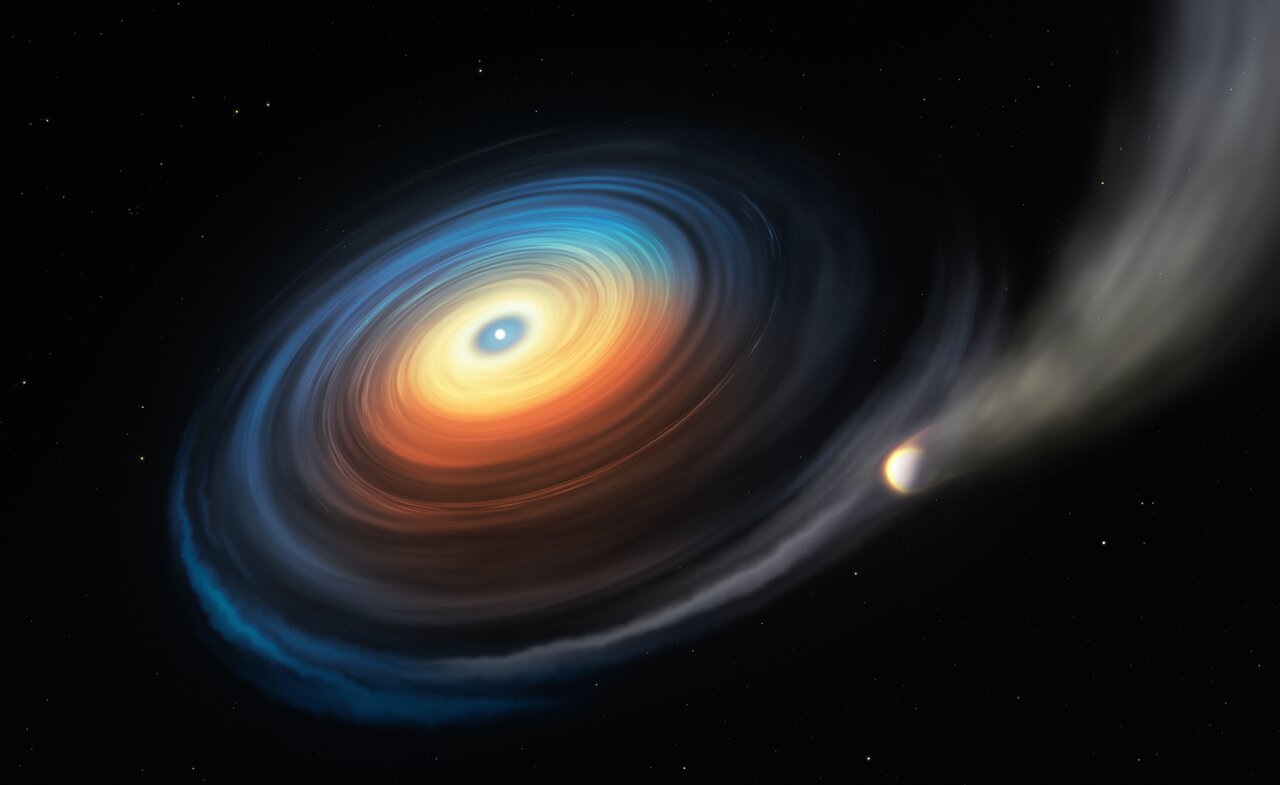
Astronomers have been finding planets in all sorts of unexpected locations recently. First, NASA’s planet-hunting satellite TESS discovered a planet that should have been annihilated by its star. Then, there was the news that planets could form around supermassive black holes. And now, a team from the European Southern Observatory has seen evidence of the first giant planet orbiting a white dwarf — the decayed remnants of a once-bright star which is evaporating the planet as it fades.
Using the Very Large Telescope, the team spotted a planet in orbit around WDJ0914+1914, a white dwarf which is the ancient core of a star once like our sun. White dwarfs are dead stars, meaning nuclear fusion is no longer occurring, but they are still extremely hot. And they are extremely dense, as they have as much mass as our sun but in a volume roughly equal to that of Earth. The planet, which is similar to Neptune or Uranus, is orbiting so close that its atmosphere is being stripped away by radiation, leaving a disk of gas around the star.
It is this disk that clued the astronomers in that something unexpected was going on in this particular system. They noticed small variations in light given off by this white dwarf as well as indications of trace amounts of hydrogen, oxygen, and sulfur, which are usually associated with the atmospheres of giant planets. Scientists had believed that these stellar cores could host planets or planetary remnants, but this marks the first time that a surviving giant planet has been seen around a white dwarf.
Spotting the planet was serendipitous, as the team who discovered the planet had been looking at a range of around 7000 white dwarfs as part of the Sloan Digital Sky Survey. “It was one of those chance discoveries,” researcher Boris Gänsicke, from the University of Warwick in the U.K., said in a statement. “We knew that there had to be something exceptional going on in this system, and speculated that it may be related to some type of planetary remnant.”
The finding gives an eerie view into what our solar system could look like in the far future. “Until recently, very few astronomers paused to ponder the fate of planets orbiting dying stars,” Gänsicke said in the statement. “This discovery of a planet orbiting closely around a burnt-out stellar core forcefully demonstrates that the universe is time and again challenging our minds to step beyond our established ideas.”



